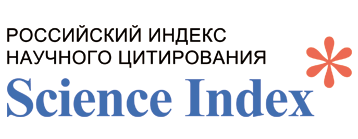CHEMICAL MODIFICATION OF NAFTALINE-1-IL-BIS(SODIUM CARBAMODITHIOATE)
Keywords:
naphthylaminedithiocarbamate, thioanhydride, dithioacetylenic, alkoxyalkyl, aroxyalkyl ethersAbstract
Introduction. Interest in numerous naphthylamine derivatives is due to a wide range of their biological activity (growth-stimulating, antimicrobial, anticancer, antiviral, antihypertensive, antidiabetic, etc.). The aim of the workis the synthesis of biologically active N,S,O-containing substances in the series of acetylenic, alkoxy- and aroxyalkyl esters of naphthylamine. Study of acylation, propargylation and alkylation reactions of naphthalene-1-yl-bis(sodium carbamodiothioate). Methodology. New derivatives of naphthylbisdithiocarbamic acid were synthesized as a result of the modification of disubstituted α-naphthylaminedithiocarbamate. It was shown that the interaction of α-naphthylaminebisdithiocarbamate with benzoic acid chloride, propargyl bromide and alkyl halides (2-methoxyethyl, 2-ethoxyethyl, 2-phenoxyethyl, 3-phenoxypropyl) leads to the formation of the corresponding thioanhydride, dithioacetylenic, alkoxy- and aroxyalkyl esters of naphthylbisdithiocarbamic acid. Synthesis was carried out in acetone at room temperature for 1.5 – 3 h. Reaction coursewas monitored by TLC method. Results and discussion. It was established that propargylation, acylation and alkylation reactions of α-naphthylaminedithiocarbamine derivative proceed easily and with high yields (66 − 91%). The structure of the synthesized compounds was established based on the data of elemental analysis and 1H and 13C NMR spectroscopy. Thus, were synthesized new potentially biologically active naphthylbisdithiocarbamic acid derivatives, combining pharmacophore groups in their structure.

















